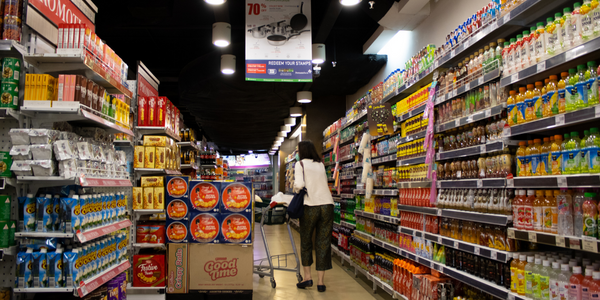下载PDF
DORA Metrics : Ensuring DevOps Success
技术
- 分析与建模 - 实时分析
适用功能
- 商业运营
用例
- 质量预测分析
- 根因分析与诊断
服务
- 数据科学服务
挑战
该公司是一家领先的媒体和娱乐实体,业务遍及 150 多个国家/地区,在管理其应用程序方面面临挑战,包括新推出的基于订阅的流媒体应用程序。该公司的内部 DevOps 团队负责管理这些应用程序,但该公司希望提高性能可见性、确定需要改进的领域并评估客户体验。然而,他们缺乏衡量 DevOps 成功的标准框架,只能依靠每月的手动报告来了解团队的健康和绩效。这种方法在分析 DevOps 数据和指标方面存在局限性。此外,频繁出现错误和解决问题的时间较长导致客户体验不佳。
关于客户
客户是一家领先的媒体和娱乐公司,业务遍及 150 多个国家。该公司拥有 3000 多名员工。除了新推出的订阅式流媒体应用程序外,该公司还有其他需要频繁更新的应用程序。该公司的内部 DevOps 团队负责管理这些应用程序。然而,该公司正在寻求提高对性能的可见性,确定需要改进的领域,并评估客户体验。
解决方案
该公司与 Gathr 合作实施 DORA 指标,这是跟踪 DevOps 成功的广泛接受的标准。该解决方案包括一个统一的仪表板来监控指标,使公司能够了解问题的根本原因并推动持续改进性能的决策。该解决方案具有开箱即用的连接器,可统一 Jira 和 Jenkins 等工具之间的数据,提供跨开发、部署和运营的端到端可见性。可视化仪表板监控四个关键的 DORA 指标(部署频率、变更前置时间、变更失败率和恢复服务时间)。该解决方案还允许自定义指标以满足不断变化的战略和运营决策需求,并进行趋势分析,以衡量规定时期内的指标并根据受让人、类型、优先级等参数分析前置时间。
运营影响
数量效益
相关案例.

Case Study
Aircraft Predictive Maintenance and Workflow Optimization
First, aircraft manufacturer have trouble monitoring the health of aircraft systems with health prognostics and deliver predictive maintenance insights. Second, aircraft manufacturer wants a solution that can provide an in-context advisory and align job assignments to match technician experience and expertise.

Case Study
IoT Data Analytics Case Study - Packaging Films Manufacturer
The company manufactures packaging films on made to order or configure to order basis. Every order has a different set of requirements from the product characteristics perspective and hence requires machine’s settings to be adjusted accordingly. If the film quality does not meet the required standards, the degraded quality impacts customer delivery causes customer dissatisfaction and results in lower margins. The biggest challenge was to identify the real root cause and devise a remedy for that.

Case Study
Large Oil Producer Leverages Advanced Analytics Platform
Approximately 17,000 wells in the customer's portfolio have beam pump artificial lift technology. While beam pump technology is relatively inexpensive compared to other artificial lift technology, beam pumps fail frequently, at rates ranging from 66% to 95% per year. Unexpected failures result in weeks of lost production, emergency maintenance expenses, and costly equipment replacements.

Case Study
The Internet of Trains
Train operators the world over are expected to work miracles, i.e. never to be late. So, with acute service and availability targets to meet, an efficient maintenance program is important. And data-enabled functionality is a must for Siemens. Reactive maintenance (after an incident) and routine, preventive maintenance with its visual inspections and scheduled exchange of components, are no longer enough. We’ve moved on to more cost-effective, condition-based, predictive maintenance. The actual condition of components is measured via the transfer and remote monitoring of diagnostic sensor data; data which is also used to analyse patterns and trends. This helps predict when a component is likely to fail, so it can be repaired before anything untoward happens. To ensure the commercial sustainability of this approach, Siemens needs to use and re-use existing data, creating a kind of ‘Internet of Trains’. Towards this end, they’re analysing sensor data in near real time, which means they can react very quickly, ensuring that customer transport services aren’t interrupted. “It is really difficult to define every issue before it impacts operations using only data from the trains”, Kress explains. However, recent success stories prove that everything is possible.

Case Study
FMCG Case Study – CPG Line Monitoring
The leading CPG company operates several warehouses, mostly closer to the last distribution point (Large retailers). Products in various categories are packaged in specific delivery or display cartons at these facilities. As most CPG businesses consist of high volume with low margins, optimizing every operation and effective utilization of resources add up to profit margins. The key problem at these warehouses is the lack of visibility into reasons for machine breakdowns or idle time, thereby delay in delivery. The sunrise meetings lead to post-mortem of delivery issues like delay or quality. The customer wanted to implement real-time line monitoring and alert system to gain control over downtime issues and implement improvement measures.

Case Study
Prevent Process Inefficiencies with Automated Root Cause Analysis
Manufacturers mostly rely on on-site expert knowledge for root cause analysis. When the defective product is sent to lab for analysis, it is laborious and always a post-mortem one. Manufacturers that collect data from IT and OT also need a comprehensive understanding of a variety of professionals to make sense of it. This is not only time consuming, but also inefficiencient.





